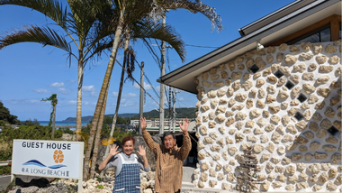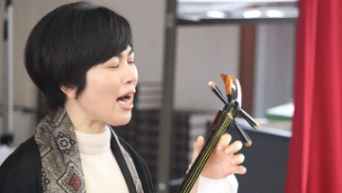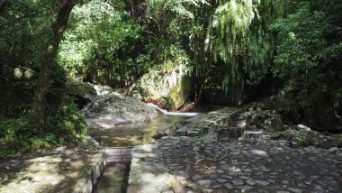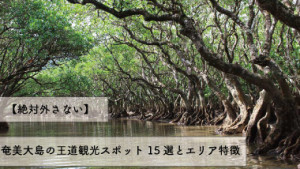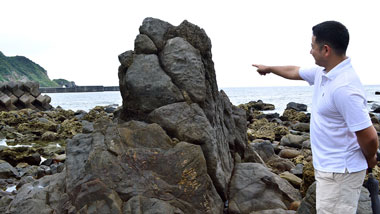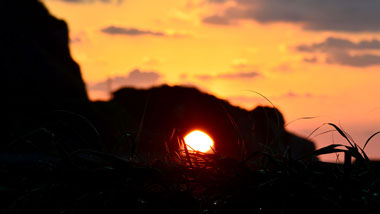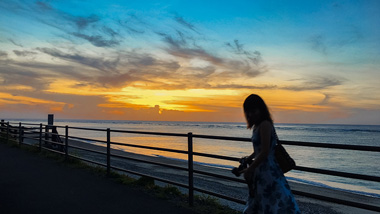The Flora & Fauna in the Amami Nature Observation Forest (Spring, Summer Ver.)
島景
2017/03/31
奄美自然観察の森 自然観察指導員 川畑 力
When it comes to Amami, images of the crystal clear sea, coral reefs, and stunning tropical fish may be strong, but in reality over 80% of the island is mountainous areas, so the island is almost all mountain. A wide variety of plants and animals live in these mountains, as well as many endemic species.
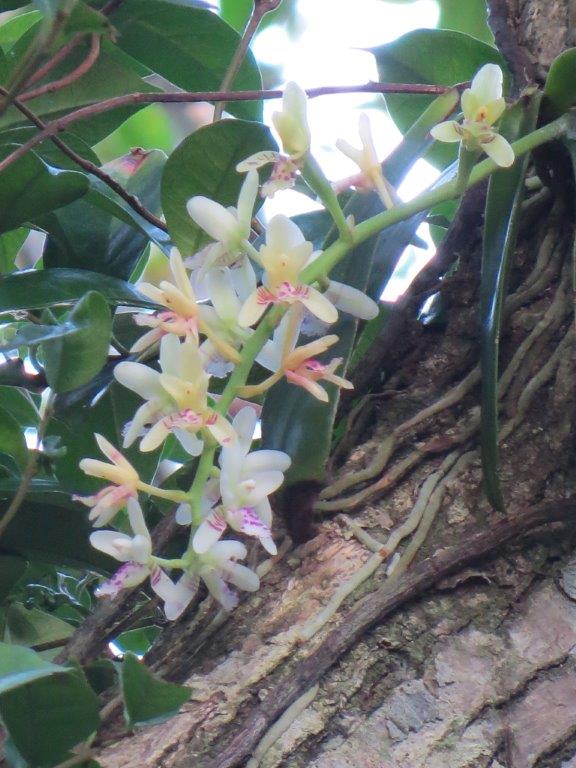
-The ‘nagoran’ (Phalaenopsis japonica/Sedirea japonica), signaling the arrival of summer on Amami-
Be that as it may, these plants and animals are rarely seen in day-to-day life. At the ‘Amami Nature Observation Forest’ (奄美自然観察の森) in Tatsugo Town, many of these creatures live in the wide premises, so you can safely observe Amami’s nature. In this article, the wildlife from the spring to summer months will be introduced.
Amami’s Spring Forest that is Busy Raising Youngsters
On Amami Oshima, the change of the seasons is indicated by the Shii tree (a species of Castanopsis). The younger, yellow-ish leaves grow on the Shii trees on the mountain tops, and the contrast with the older leaves becomes clearer, thus marking the arrival of spring. In addition, there are people who feel the coming of spring with the smell of the Shii tree flowers.
Then, not only the landscape, but the activities of the flora and fauna makes us feel that it is spring.
Spring is the breeding season of wild birds. Observing birds becomes much easier during this time.
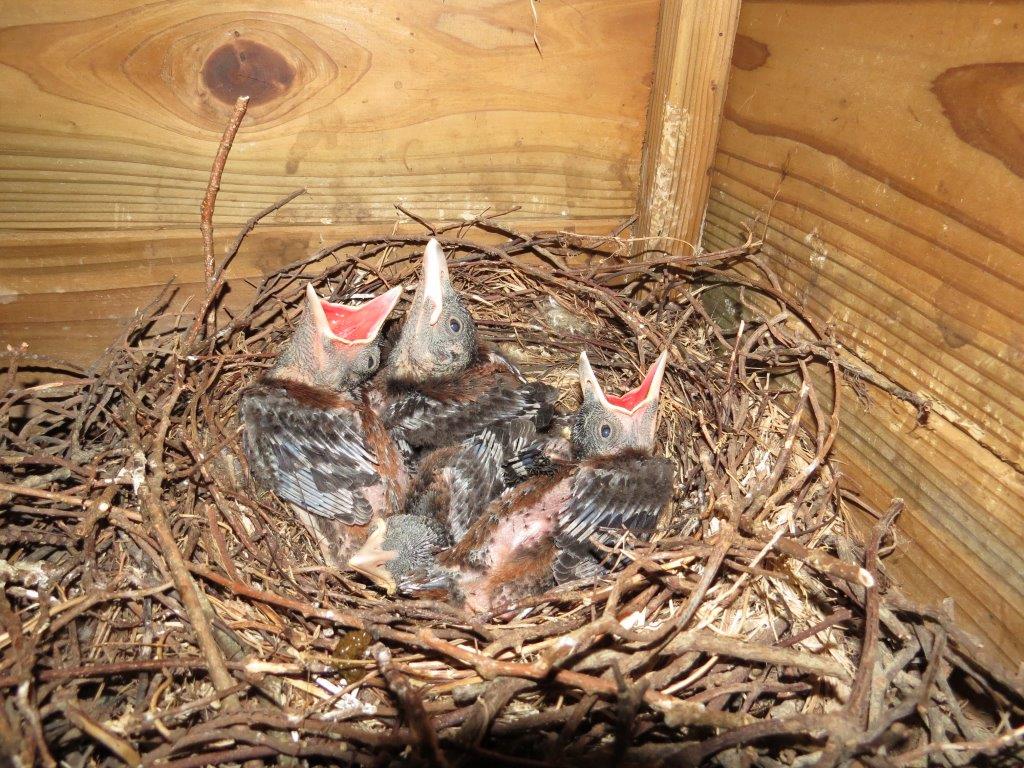
-Lidth’s jay (‘rurikakesu’) chicks, stretching out their necks to beg for food-
The endemic Lidth’s jay is the most famous bird on Amami Oshima, and at the Amami Nature Observation Forest, you can observe how the Lidth’s jay nests and diligently raises their chicks in various places.
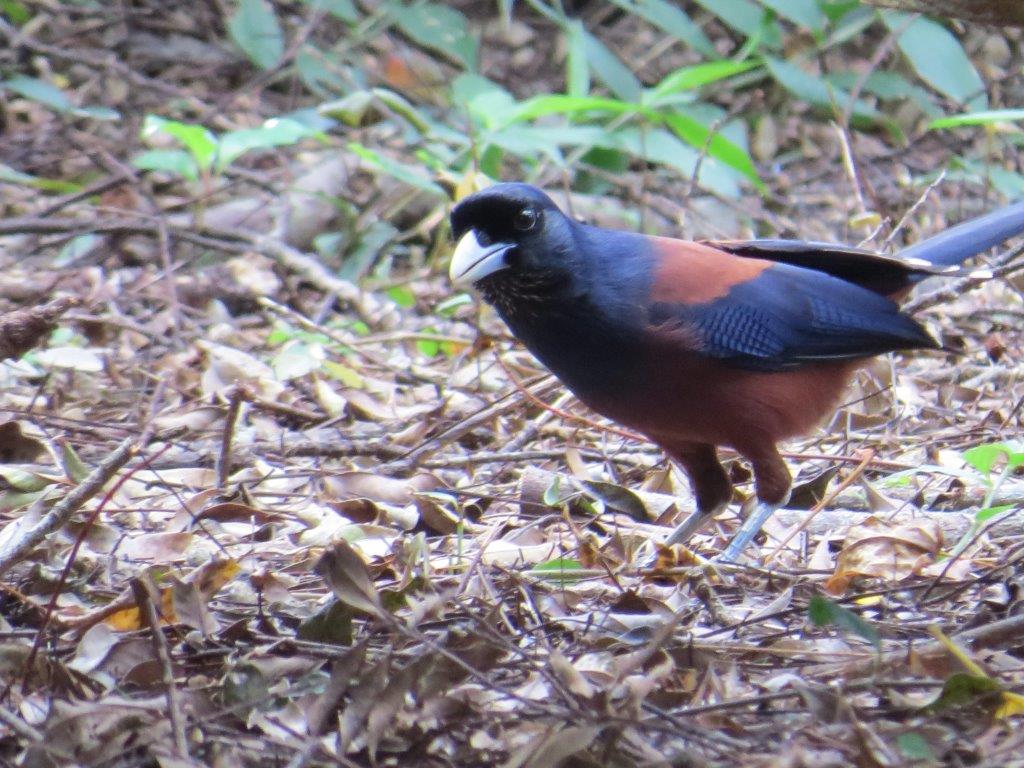
This is the cute Lidth’s jay. It is an endangered species that is also classified as a natural monument; it only lives on Amami Oshima, Kakeromajima, and Yorojima.
There is also the Ryukyu robin (‘akahige’) that has a very beautiful bird call:
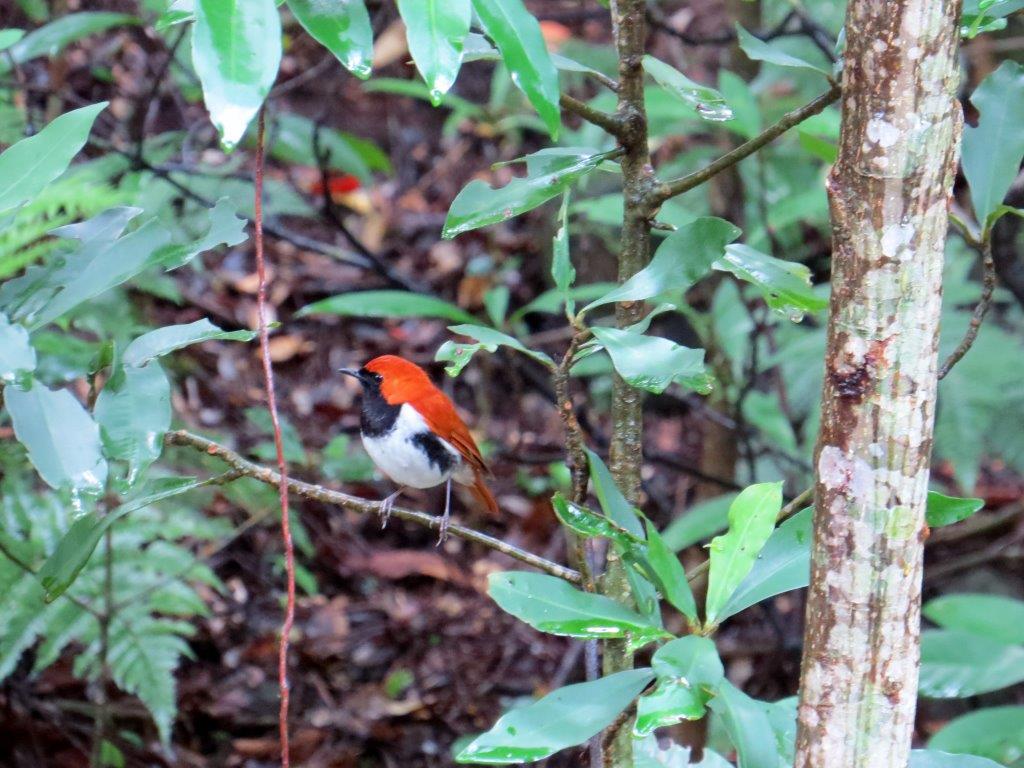
This robin’s clear chirp is very popular. It is a Nationally Designated Natural Treasure.
There is also the endemic White-backed woodpecker,
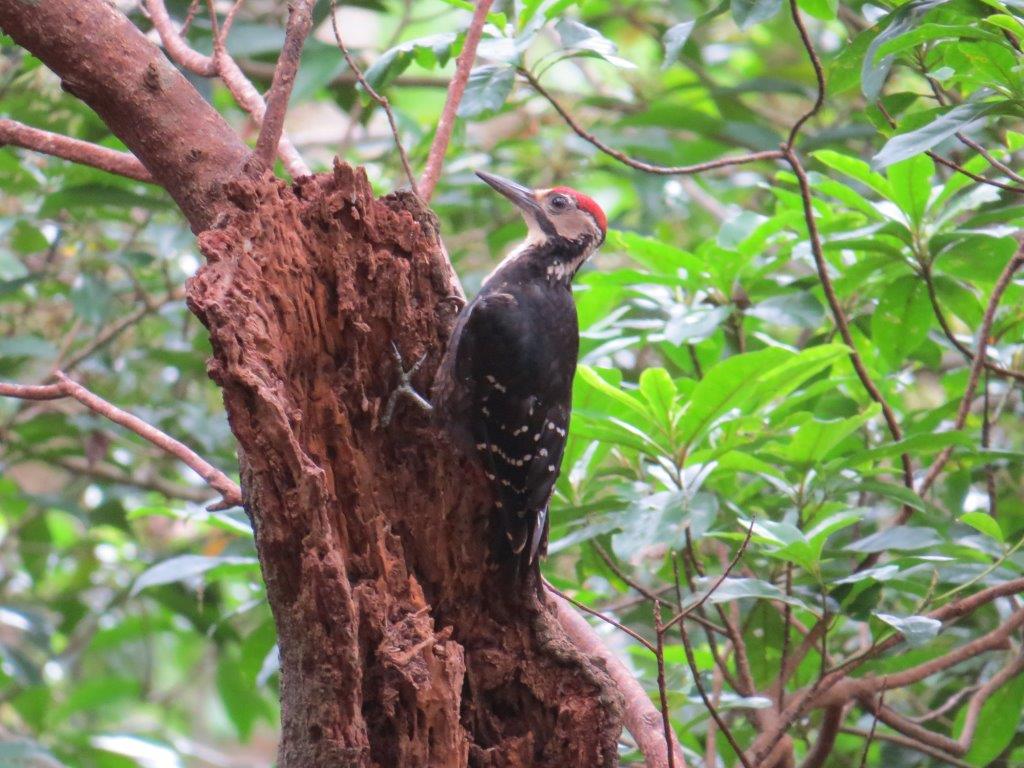
And you can observe the wild Japanese wood pigeon, called ‘karasu-bato’ (literally crow pigeon) because it looks like a crow at first glance.
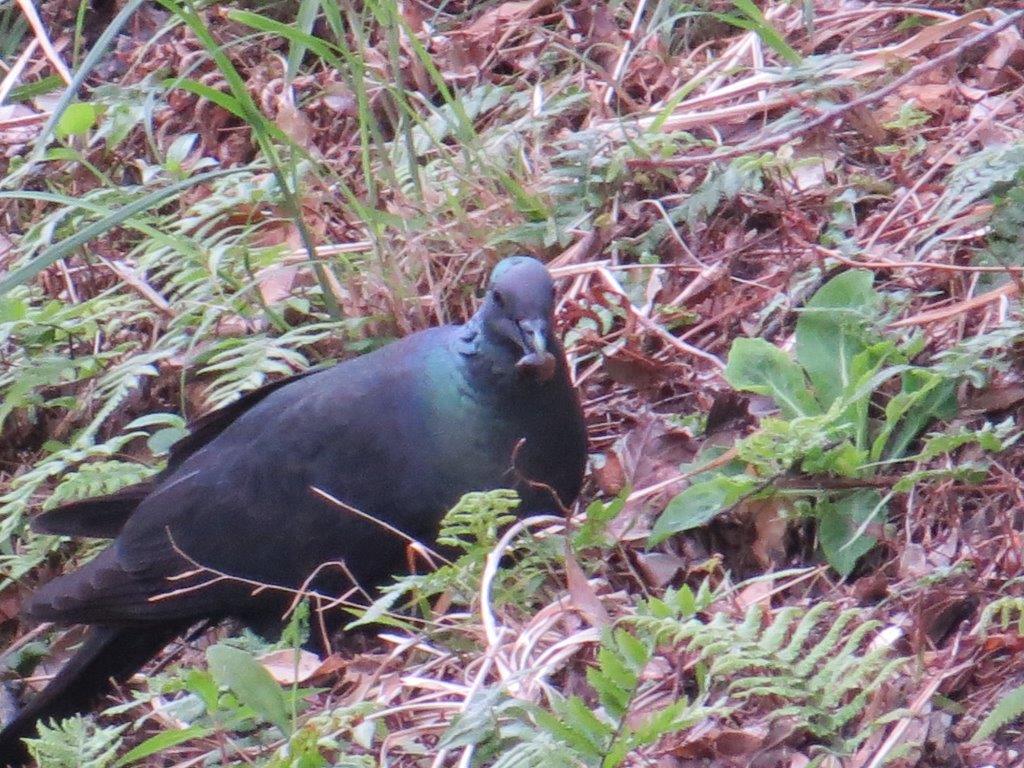
Actually, all of the wild birds listed above are designated natural monuments, and are very rare.
At this facility, visitors can observe about 15 kinds of wild birds (including those listed above) that are rare species and are designated natural monuments, so people visit to bird-watch or take photographs from all over Japan and abroad.
The Summer Forest of Insects and Other Critters
As the breeding of wild birds settles down and summer arrives, the forest transforms into one of insects and other living creatures. The daytime becomes noisy with the sound of cicadas, and various kinds of butterflies flutter about. At night the noise disappears, and instead of butterflies, the ‘kiirosuji-botaru’ (a kind of firefly) flies around in search of a female mate. Also, if you carefully observe the ground, you may come across a glowing mushroom. This mushroom is called the ‘shii-no-tomoshibi-take’ (Mycena lux-coeli).
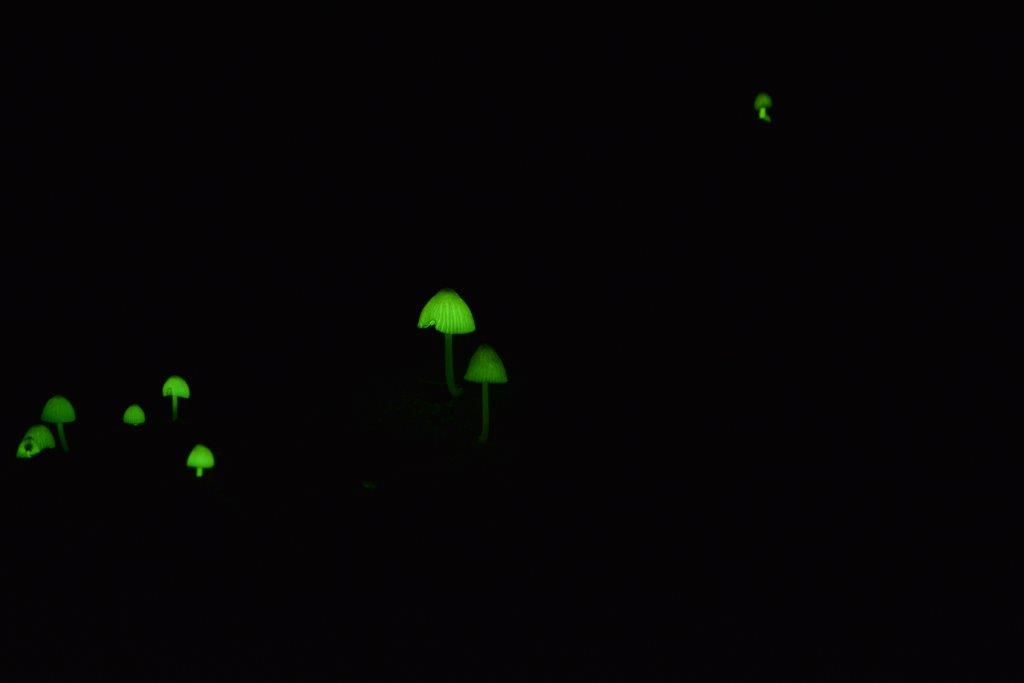
The ‘shii-no-tomoshibi-take’ that wondrously glows in the darkness.
This rare luminescent mushroom can only be observed on Amami Oshima. It only grows on very old or decaying Shii trees (the variant on Amami is called ‘suda-jii’).
However, when it comes to Amami Oshima, summer also means that the dangerous Habu snake is out. At night there is a danger that the Habu snake will come out, so please check your surroundings as you observe the forest.
We offer guides through the park! Why don’t you try observing nature?
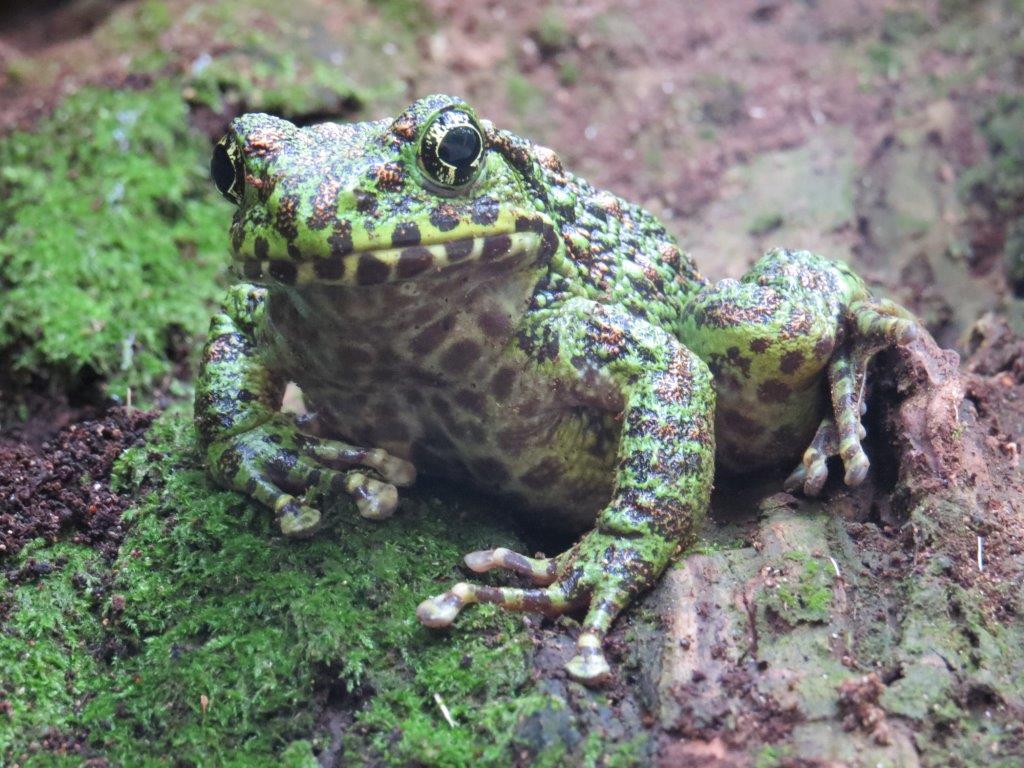
The ‘amami-ishikawa-gaeru’ (Odorrana splendida) frog is known as the most beautiful frog in Japan.
Although the summer forest is one of insects and other living creatures, there are also plants with beautiful flowers that bloom.
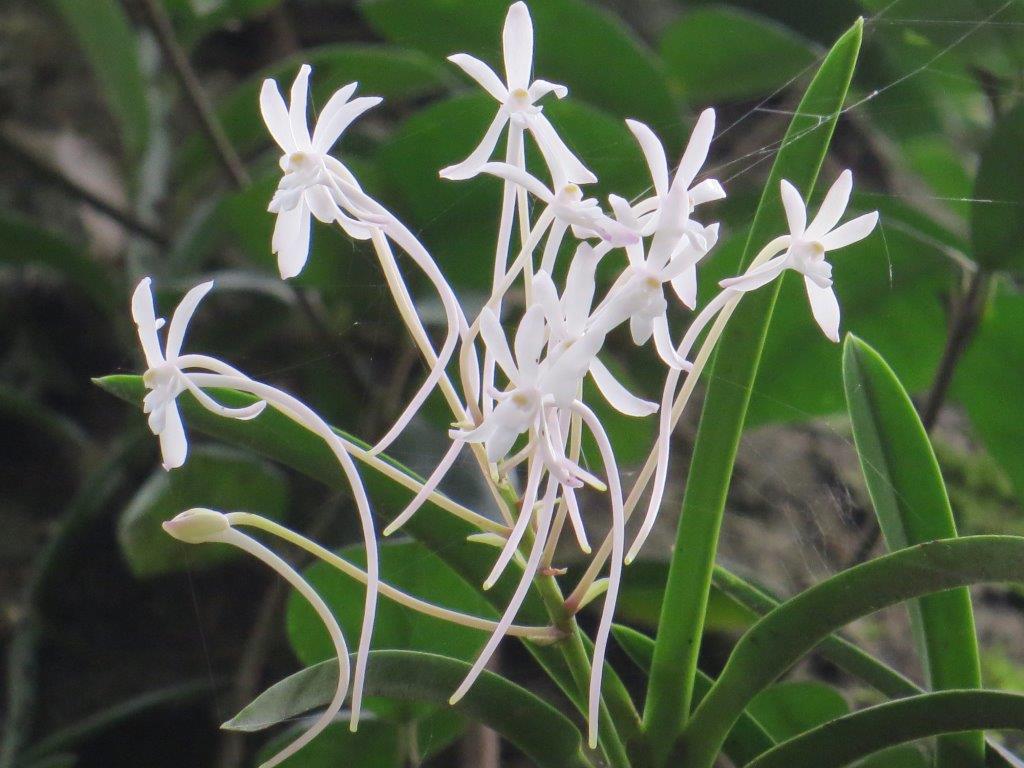
The beautiful ‘fuu-ran’ (Vanda falcata) that blooms in summer.
By observing plants, insects and other wildlife seasonally, please encounter the nature of Amami Oshima and experience its magnificence. It will only be during the daytime, but if you prefer, we can also guide you through the park, so please book in advance if you are interested.
この記事を書いたフォトライター

奄美自然観察の森 自然観察指導員 川畑 力
